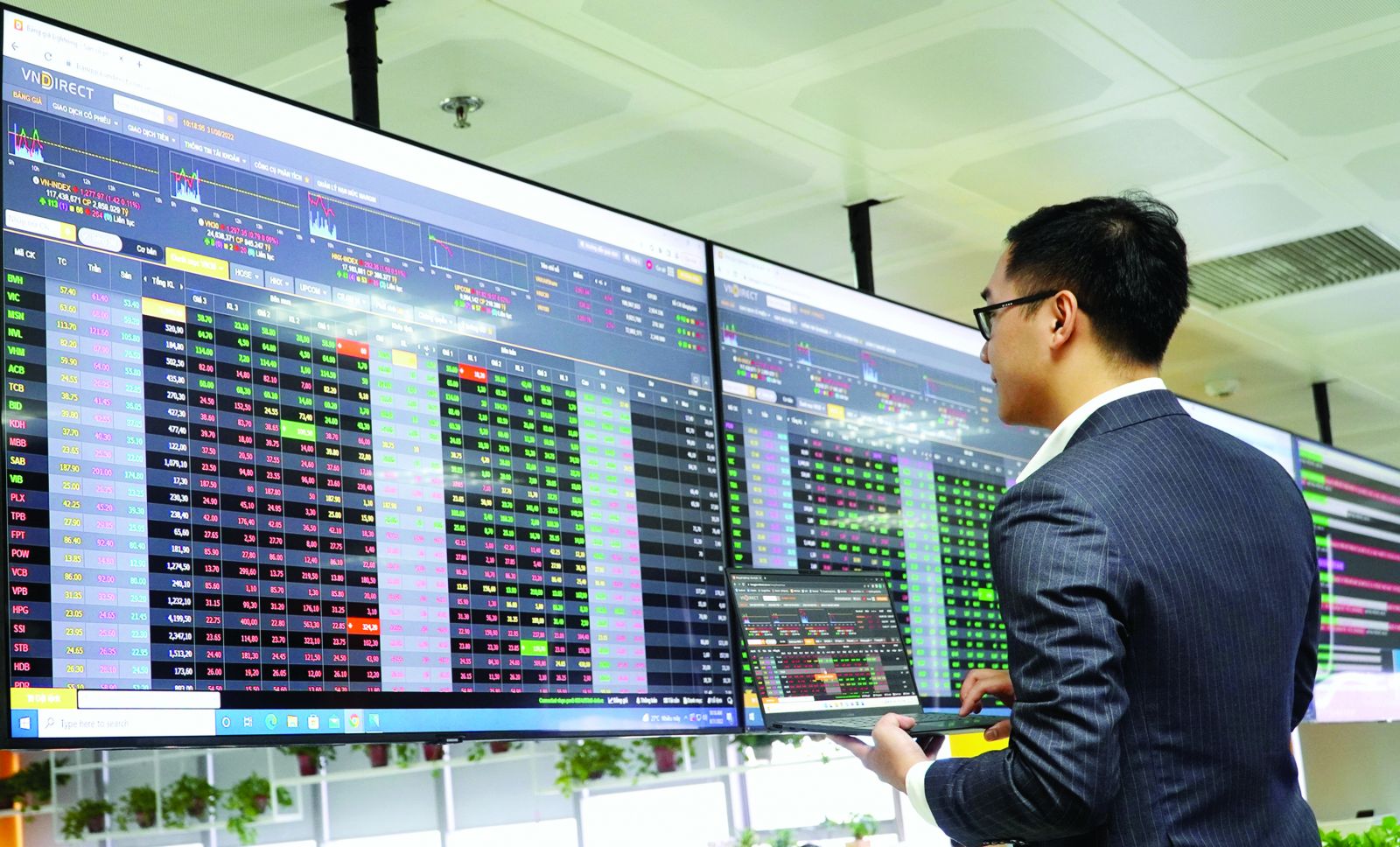Accumulating stocks in the new cycle
Many investors are currently anxious about which stocks to accumulate as the VN-Index approaches 1,200 points.
Stock accumulation, according to Mr. Nguyen Anh Minh, Head of the Investment Group at F319, is a value investment strategy. Stock collectors merely need to choose stocks based on criteria and competitive advantages. When stock acquiring, investors must analyze their portfolios and make adjustments if any stocks stray from the trajectory.
Room for uptrend
The VN-Index has gained by 80 points in the last month, and several stocks have surged by 20%-30%. The most essential reason is that liquidity has greatly risen. The average daily liquidity has risen from roughly 10 trillion dong to 14 trillion dong, with some sessions topping 20 trillion dong. This indicates that the market is at the start of a new cycle. Despite the fact that the stock market is in a new cycle, it is difficult for investors to benefit.
The present stock market movement is determined by three key factors: macroeconomic policies (both global and domestic), firm fundamentals (expectations of business success), and liquidity. When all three of these elements are favorable, the market starts a new cycle.
In terms of macroeconomic policy, the Fed's recent moves suggest that the period of strong inflation resulting to high interest rates (a danger to equities) is coming to an end. In terms of internal policy, Vietnam will follow the lead of China and Japan, focusing on economic recovery and growth. To help the economy and enterprises, the State Bank of Vietnam has slashed interest rates four times in a row.
The administration is attempting to revive economic development by every means possible. Although it takes time for policy to become reality, the second-quarter business performance report may be better, especially with high growth projected in the third and fourth quarters of 2023. While the stock market is reflecting expectations, there is still tremendous opportunity for growth in the next six months.
Individual retail investors account for the bulk of the Vietnamese stock market (both in terms of number and total investment amount). As a result, significant sums of money are mostly contributed by small investors. Recent findings indicate a rise in the money supply as a result of fresh funds and funds transferring from savings. This will continue to be beneficial to the stock market.
Which stocks to pick?
According to Mr. Minh, with the aforementioned prospects, the VN-Index may soon reach the 1,200-point level, followed by the 1,250-point and 1,300-point thresholds. However, there will always be oscillations and corrections in this ascending cycle, especially at crucial levels. Rather than a correction, it is now merely a process of volatility that allows significant funds to enter for purchasing. If the portfolio is not fully invested, the expert recommends that investors look at the following stock groups:
First, there is the banking industry, where investors might look for VCB shares. The State Bank of Vietnam has approved an increase in VCB's charter capital from 47.325 trillion dong to 55.891 trillion dong through the issuing of bonus shares from retained earnings in 2019 and 2020, which was approved by the Shareholders' General Meeting. Investors might consider purchasing VCB shares in a price range of 98,000-100,000 dong per share and selling when the stock hits the target price of 120,000 dong per share (after about 6 months).

Second, in the securities sector, SSI and VND are two top equities that are profiting from the stock market's expansion. Investors should consider purchasing SSI shares for roughly 22,400 VND per share and profiting between 28,300 and 30,000 VND per share. Investors should consider purchasing VND shares at roughly 18,000 VND per share and profiting when VND hits the target price of 25,000 VND per share over a 6-month holding term.
Third, the B- O Mon Block is a series of projects in the oil and gas industry for developing, extracting, and transporting gas from upstream gas reserves to downstream gas power facilities. The project is planned to produce 102 billion cubic meters of gas and 12.65 million barrels of oil during a 23-year period beginning in 2026. GAS and PVS are two of the oil and gas firms that will profit the most from this initiative.
With the aforementioned prospects, investors may purchase GAS at a price range of 93,000-94,000 VND per share and profit when GAS hits 120,000 VND per share after a 6-month holding term. PVS shares may be purchased for roughly 31,000 VND per share and sold for between 35,000 and 40,000 VND per share.
Fourth, in the steel industry, investors could select equities such as HPG and HSG. Steel prices are now oscillating near the lowest levels of the year, but if the real estate market rebounds, steel prices will likely rise. Investors should consider purchasing HPG at a price of 22,000-23,000 VND per share and profiting when it hits a price of 28,000-30,000 VND per share. HSG shares may be purchased for roughly 15,000 VND per share and profited when it hits 20,000 VND per share after a 6-month holding period.
Fifth, significant equities in the infrastructure investment industry include HHV and HUT. Many infrastructure investment projects are currently being aggressively executed under the guidance of the government, and enterprises such as HHV and HUT will immediately profit from this. Investors could consider purchasing HUT at roughly 17,000 VND per share and profiting when HHV achieves the 20,000 VND per share target price. HHV may be purchased at 12,000-13,000 VND per share and profited when it hits 15,000-18,000 VND per share after a 6-month holding period.
Finally, with high electricity rates and depleted hydroelectric resources, gas and electricity firms will immediately gain, as demonstrated by POW and NT2. Investors might consider purchasing POW at roughly 13,000 VND per share and NT2 at around 31,000 VND per share for a 6-month holding period.








